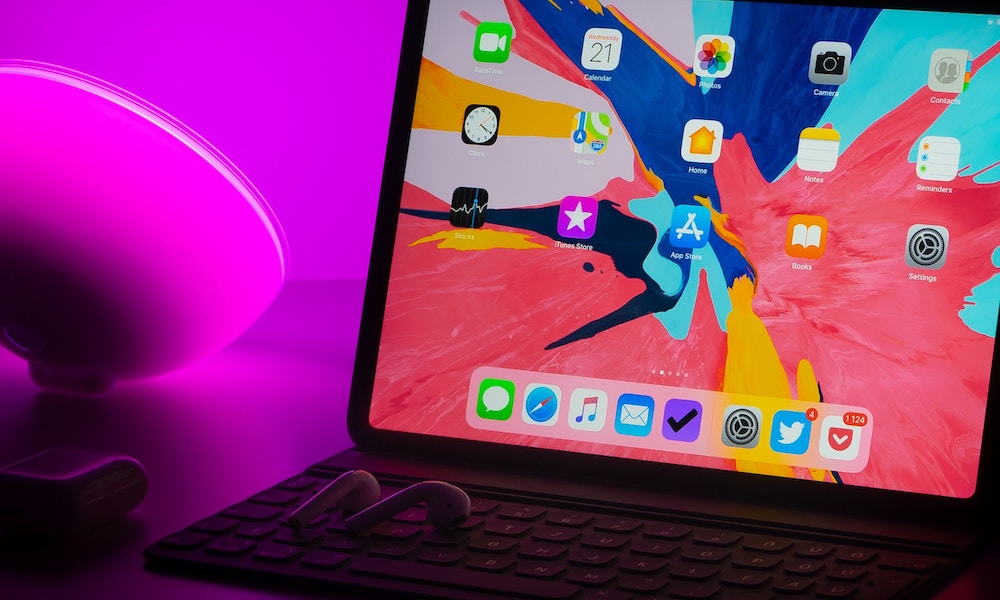Mini-LED iPads Could Just Be a Stepping Stone on the Journey to OLED
 Credit: Daniel Korpai / Unsplash
Credit: Daniel Korpai / Unsplash
Toggle Dark Mode
At this point, it’s pretty much a given that Apple’s next iPad Pro will feature new Mini-LED display technology, but now a new report suggests that this isn’t necessarily Apple’s end goal, but could just be a stepping stone on the way to releasing the first iPad with an OLED screen.
A new report in South Korea’s The Elec confirms the rumours we’ve been hearing since February that Apple will be releasing its first Mini-LED iPad Pro early next year, which by now isn’t really any big news, but The Elec also adds the previously unheard claim that this could be followed by another set of new iPad Pro models later next year that would feature OLED displays.
If true, this actually throws a big curveball into everything we’ve heard thus far, which had suggested that Apple was going all-in on Mini-LED for its future products, which are also expected to include redesigned 14-inch and 16-inch MacBook Pro models. Further, the new Mini-LED technology was rumoured to be better than OLED, which begs the question as to why Apple might take a step backward.
That said, most of the rumours around a Mini-LED iPad Pro have been focused on the 12.9-inch model, leaving room for the possibility that Apple may actually split the display technology between its differently-sized iPad Pro devices.
This would certainly be consistent with the move to Mini-LED on Apple’s MacBooks, the smallest of which has a display that’s still only slightly larger than that on the 12.9-inch iPad Pro. Meanwhile, the smaller 11-inch iPad Pro could stick with LCD displays in the first half of 2021 before moving to OLED in a later model.
There’s also the unlikely possibility that Apple could choose to release only the 12.9-inch iPad Pro by itself, with Mini-LED technology and possibly even 5G support, while leaving the smaller iPad Pro for a later refresh entirely.
Even if this report is accurate, however, the timing is a lot more questionable. Only once in the ten-year history of the iPad has Apple ever released two versions of the same model in the same year, and that was way back in 2012 when the third- and fourth-generation iPads debuted six months apart, and that seemed to be spurred largely as part of Apple’s move to the Lightning port.
However, the supply chain sources cited by publications like The Elec often have a clearer picture of the “what” than they do of the “when,” so predictions of actual product release dates should always be taken with a certain amount of skepticism, especially when they’re more than a few months in advance. The Elec does note that both Samsung and LG are already developing the OLED displays for the future iPad Pro, with the former even going so far as to renovate one of its production lines, but that still says little about when Apple may actually choose to use them in a product.
Further, the report also notes that Apple is insisting on higher specifications for these new OLED displays than for the ones currently used in the iPhones, suggesting that it’s looking for something that can compete with Mini-LEDs, and in fact it also concedes that Apple’s plans to use OLED could be delayed “depending on the scale of adoption” for Mini-LED displays, so it’s also possible that this could simply represent an alternative plan for the company.
What This All Means
Both Mini-LED and OLED technically share many of the same benefits over traditional LCD panels, including higher brightness levels, way better contrast ratios, and improved power efficiency, even though they’re fundamentally different approaches to the same problem.
However, Mini-LED generally beats out OLED in terms of maximum brightness levels, which would certainly make them a better choice for devices like iPads and MacBooks, and while most analysts still suggest that OLED offers inherently better picture quality due to faster response times and higher contrast levels, Mini-LED could very well be catching up, especially with Apple’s research and development teams bolstering the technology.
At the end of the day, however, it may not matter as much which displays Apple ultimately goes with, as either will be a marked improvement over the current LCD panels; as great as Apple’s Liquid Retina LCD displays are, they still can’t hold a candle to OLED — just compare last year’s iPhone 11 versus the iPhone 11 Pro — and Mini-LED is much closer to OLED than it is to any currently available LCD technology.
[The information provided in this article has NOT been confirmed by Apple and may be speculation. Provided details may not be factual. Take all rumors, tech or otherwise, with a grain of salt.]






